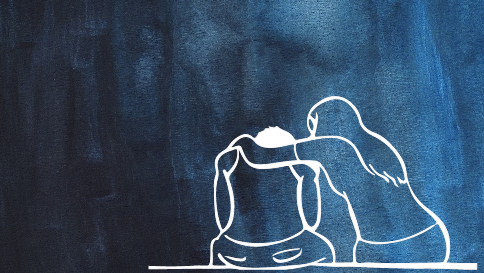In recognition of May as Mental Health Awareness Month, check out these tools that help show how to be there for friends with depression.

Sometimes well-intentioned messages do more harm than good
Here are examples of how to be as helpful as possible when communicating with a depressed friend:
Instead of saying this:

Try this:

Offer specific actions to help someone who is going through a difficult time instead of waiting for them to ask. The first message is less helpful since it can feel strange to ask for help, even when it’s needed. Be proactive! Something as small as picking up groceries for them or offering to return library books can make a world of a difference.
Instead of saying this:

Try this:

There really is no way to know exactly how someone feels, and saying this may make them feel even more misunderstood than before. The most helpful thing to do is make sure they feel heard instead of relating back to personal experiences of sadness or depression.
Instead of saying this:

Try this:
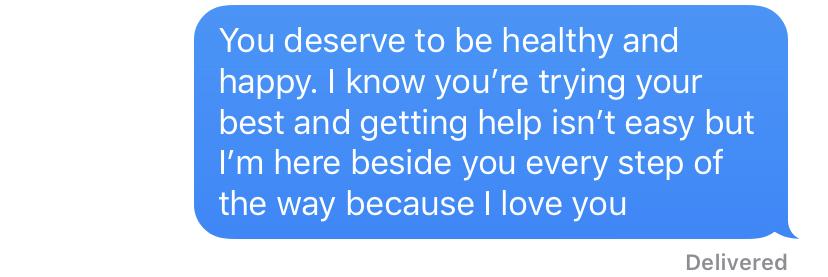
Depression is a mental illness. Don’t take its symptoms personally. It’s okay to feel angry with their illness or feel as if it has stolen them away, but know that the person they were before is still there and remind them that they are not their illness. Recovery and treatment take time but being there for them will make it easier. Expect resistance and and be patient with them, especially when they push others away. Remind them that there is nothing they can do or say that will make you leave or lose hope.
Instead of saying this:

Try this:

Guilt and fear tactics are more than just ineffective in helping a depressed friend; they can be dangerous. Acknowledge and praise their efforts in things they have been doing. Remember: even simple tasks can be daunting while managing depression, so treat them with compassion and tenderness.
Instead of saying this:
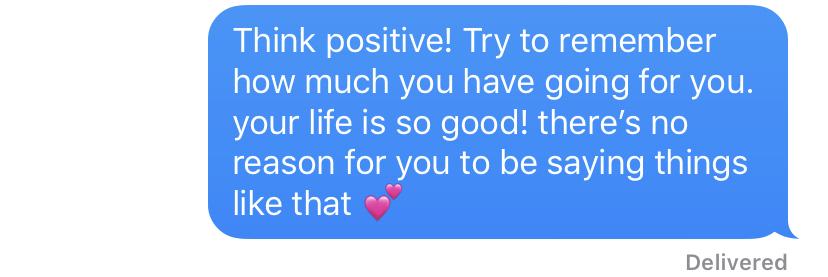
Try this:
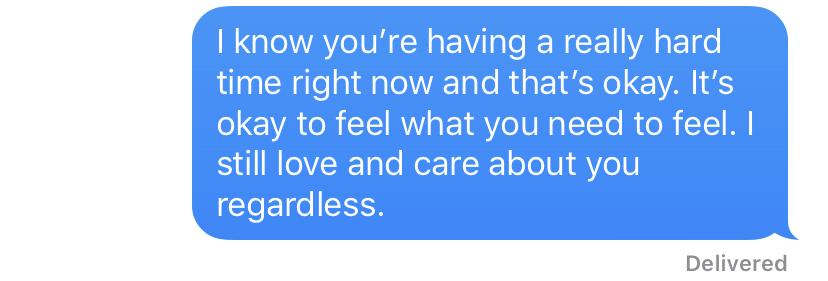
Depression isn’t a choice. Research has shown that despite good intent, positive reframing simply does not work for depressed individuals the way it would for an individual without. Even if they know that what they’re feeling may not be permanent, it’s important to ensure that they have the resources they need to manage the pain while it’s there. Support and be with them without trying to change them.
Instead of saying this:

Try this:

They may not be ready to talk about their depression. Pressuring them to do so when they’re not yet comfortable pushes them further away and may be overwhelming for them. Letting them know that when they are ready to talk about it they have someone who will listen establishes an environment that respects their feelings and personal boundaries.
An individual with depression is 20 times more likely to commit suicide than someone without.
This is especially true for children aged 10-14, a demographic more likely to die by suicide than a car crash. If you believe your friend may be suicidal, follow the National Suicide Prevention Lifeline’s five action steps when communicating with them: ask if they have been considering suicide, keep them safe, be there for them, connect them to resources and follow up. Avoid debating the meaning of life, giving advice or not taking them seriously.
The infographic below shows behaviors to pay special attention to in individuals, especially those who are depressed or suicidal, as it may indicate they plan on an attempt.
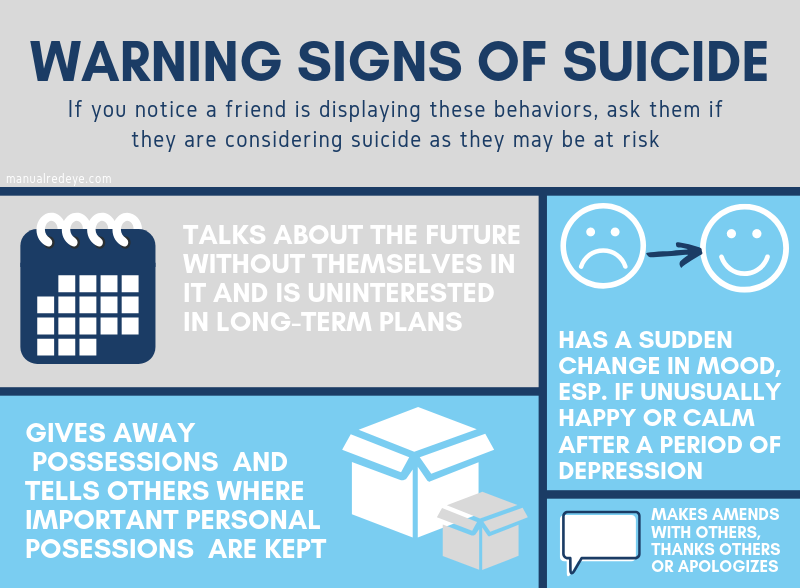
If you believe your friend is in a suicide crisis and may be considering a suicide attempt, get professional help immediately and do not leave them alone. You can:
- Assist them in getting to the nearest emergency room
- Assist them in getting to the nearest walk-in psychiatric clinic or crisis center, including these local 24 hour facilities:
- Centerstone Crisis and Information Center
- Emergency Psychiatry at University of Louisville Hospital
- Ask for help from friends or other family members to make sure they are not alone if you are unable to
- Call 911 if the suicide risk is imminent
- Have them call the National Suicide Prevention Lifeline at 1-800-273-TALK (1-800-273-8255) to speak with a trained counselor at a nearby suicide crisis center
If a loved one is experiencing suicidal thoughts, it can be helpful to have a crisis plan ready if you. Here is a template safety plan the Suicide Prevention Lifeline developed for you or your loved one to fill out and here is additional information on how to use it.
notOk is an app that works as a panic button for those experiencing a suicide crisis that sends the user’s location to trusted contacts and a message alerting them that the user is experiencing a crisis. It is available for download on iTunes here.
The Mental Health Association of New York has also developed an app, MY3, that helps users create a crisis template and provides direct access to suicide prevention hotlines. It is available for download on iTunes here.
Other apps are also available:

If you have a friend experiencing suicidal thoughts or depression, be there for them as much as you can. If you are experiencing suicidal thoughts or depression, you are not alone. Confidential help is available for free with the Suicide Prevention Lifeline Chat.




